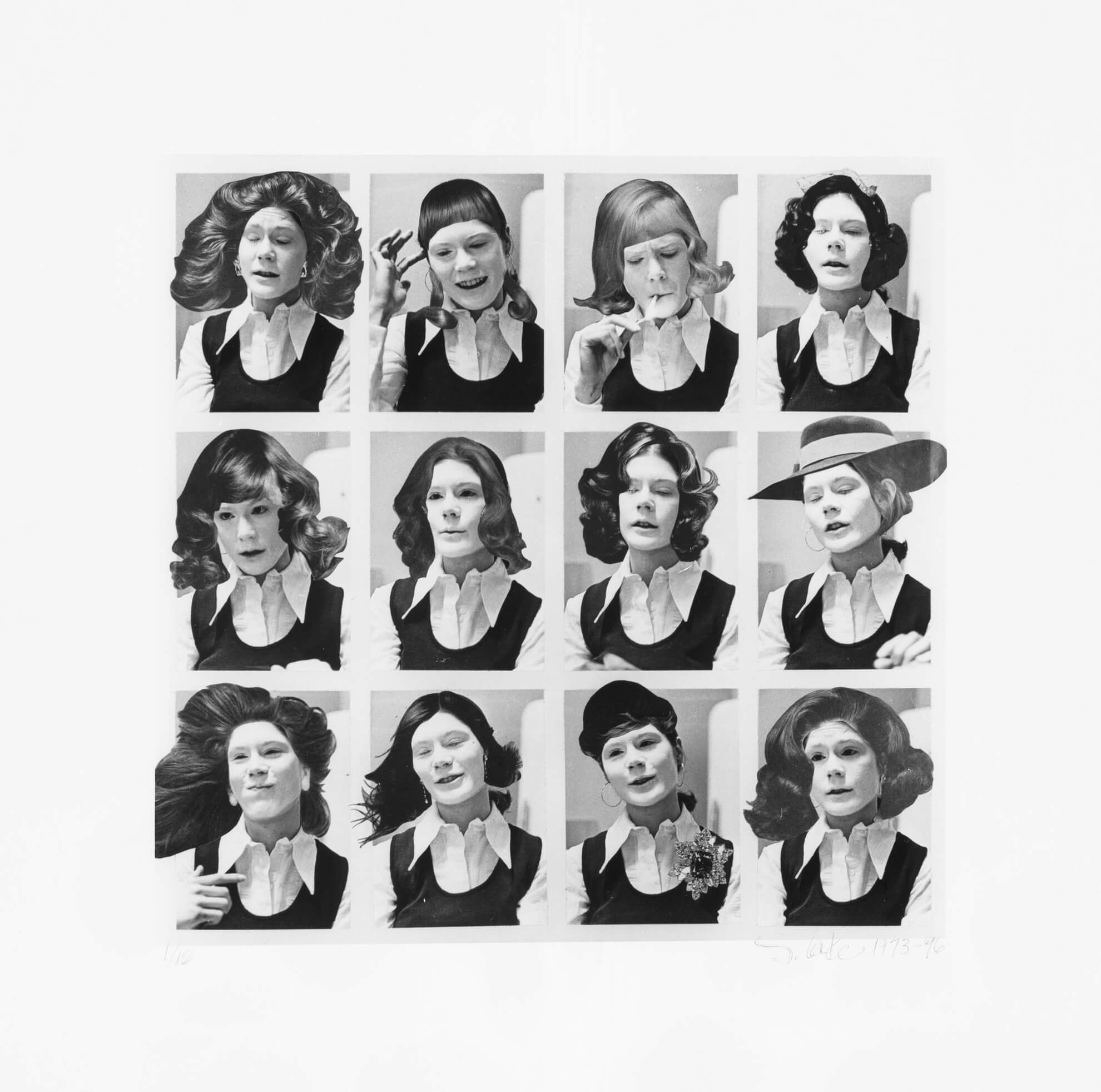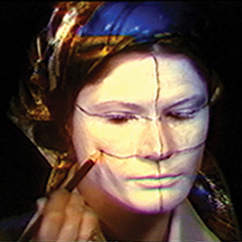Miss Chatelaine 1973

Suzy Lake, Miss Chatelaine, 1973
Gelatin silver fibre-based print (printed 1996), 22.3 × 22.4 cm
Metropolitan Museum of Art, New York
Miss Chatelaine presents a grid of twelve portraits in which Lake is photographed in whiteface, with different hairstyles cropped from women’s magazines collaged onto her head. Her facial expressions are natural—laughing, reflecting, lighting a cigarette, all while seeming to talk with someone off-camera—but the elegantly arranged hair around her anonymous face provides a satirical commentary on the depiction of women in the media. Step by step, it attacks the stereotype of femininity. Created during the same period as On Stage, 1972–74, it too presents a behind-the-scenes view of the formation of a public self. As such, it parodies the social pressures on women and becomes an important piece of feminist art.

The title Miss Chatelaine refers to the popular Canadian women’s magazine Chatelaine. Under the direction of the legendary editor Doris Anderson, the magazine courageously published articles on equal pay for women, abortion, and divorce while, at the same time, it balanced its appeal with the customary attention to impossible standards of fashion, beauty, and housekeeping. In this work, Lake simultaneously identifies with, and disavows, the standards of beauty urged on women; as she said, “I knew what I should look like … I was told that all my life.” However, she resisted identifying her work with overt contemporary feminist issues. Miss Chatelaine can be seen as an early intervention into assumptions about gender and the societal standards of womanhood that are acted out on women’s bodies. The images have the effect of concealing the very facial features that the makeup is intended to define.
In Lake’s artwork, the grid, with its ties to Conceptual art as a rational visual strategy of organization, often carries with it an expressive weight that is focused on the self. American artists including Eleanor Antin (b.1935) (a mentor for Lake) and Hannah Wilke (1940–1993) likewise explored this fusion of reason and emotion. In turn, Lake’s use of the grid as a narrative device, as performance documentation, and as a container for role-playing later influenced the American artist Cindy Sherman (b.1954).
Imitations of Myself #1, 1973, continues Lake’s use of whiteface to explore the formation and concealment of identity. In this sequenced grid of forty-eight pictures, Lake sits at a kitchen table laden with beauty products, applying both whiteface and cosmetic makeup, including eye shadow, eyeliner, and lipstick. In the first frame, her face is obscured by a sheet of white paper on which is scrawled “Genuine Simulation of …” This image is followed by four photographs of Lake, without makeup, wearing a beige cardigan and a pink shirt, and tucking her hair behind her ears as she smokes a cigarette. As in A One Hour (Zero) Conversation with Allan B., 1973, she again appears to be in good-humoured conversation with someone off-camera.
Lake’s focus on the space beyond the frame presents several possibilities: she could be looking at the camera, at a viewer, or at her own reflection. This ambiguity becomes a crucial element of her performance and her notion of constructing a self. As Lake applies the white makeup, which she then amplifies with cosmetic makeup, she alternates her focus between an off-camera mirror and the camera itself. The camera operator takes pictures at regular intervals, providing a visual record of Lake’s performance.

 About the Author
About the Author
 More Online Art Books
More Online Art Books
 Acknowledgements
Acknowledgements